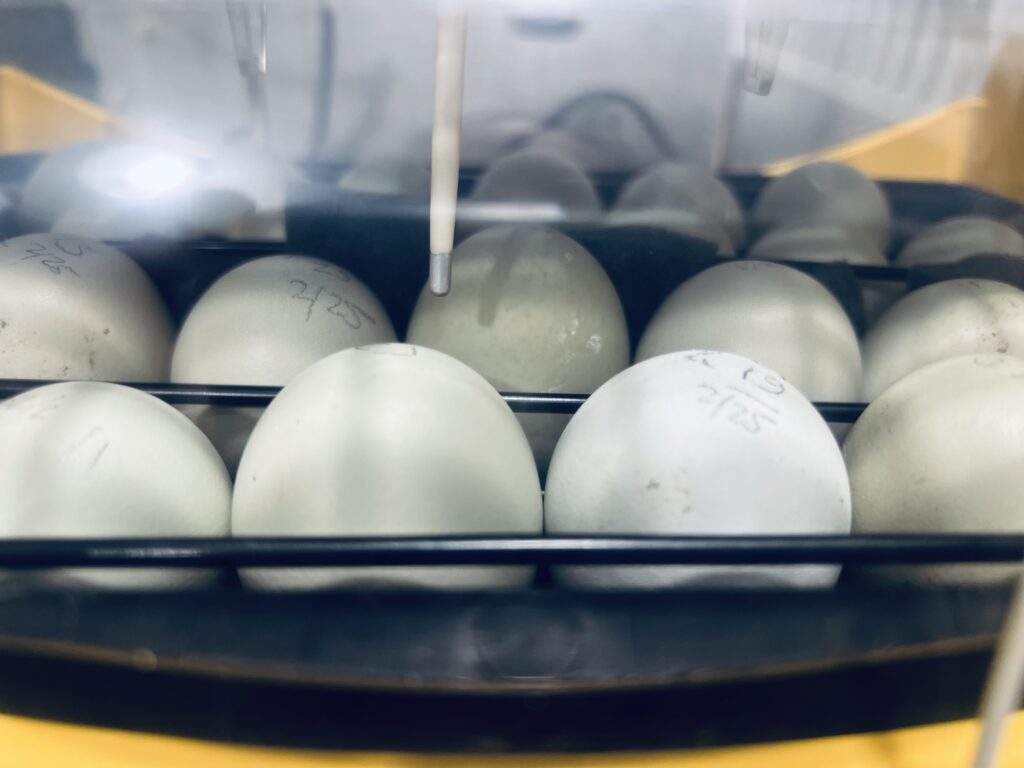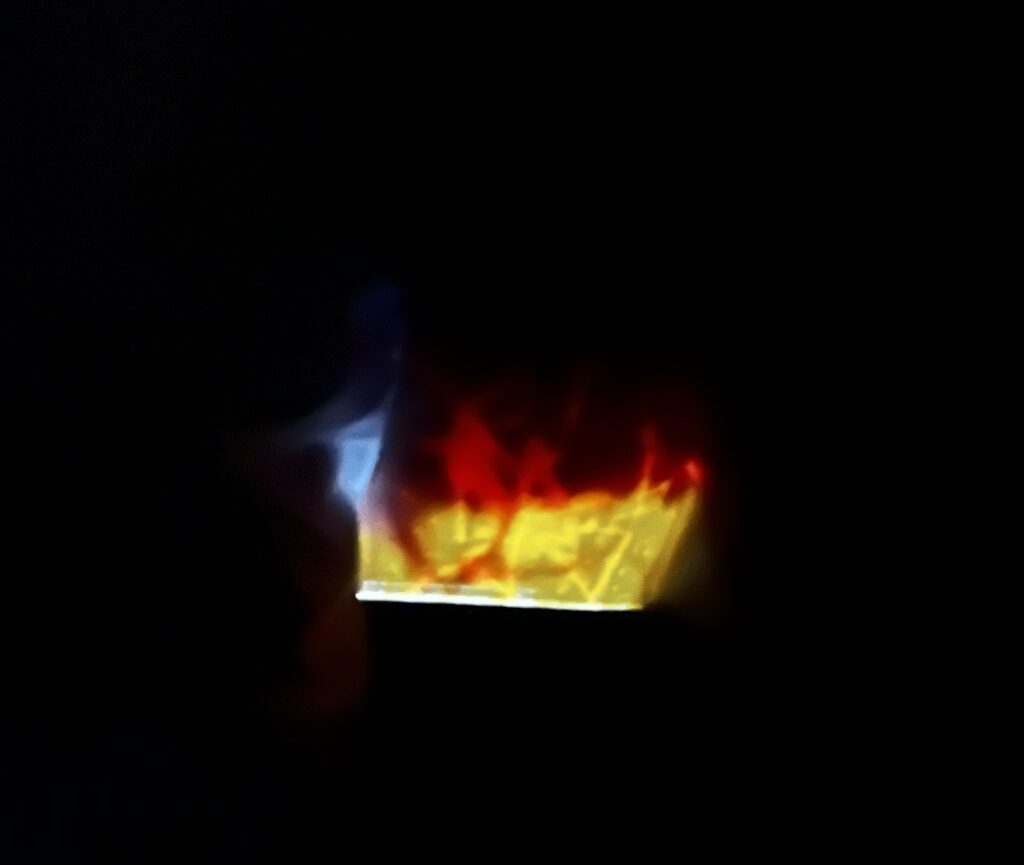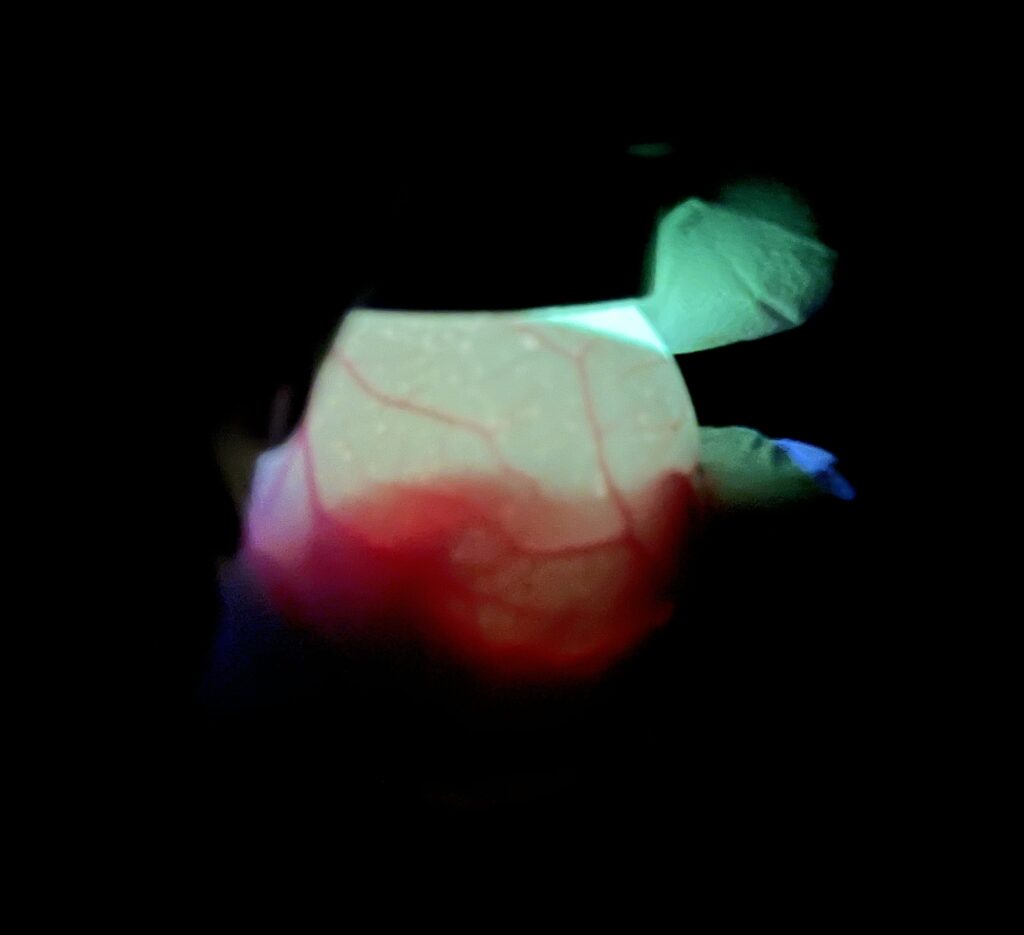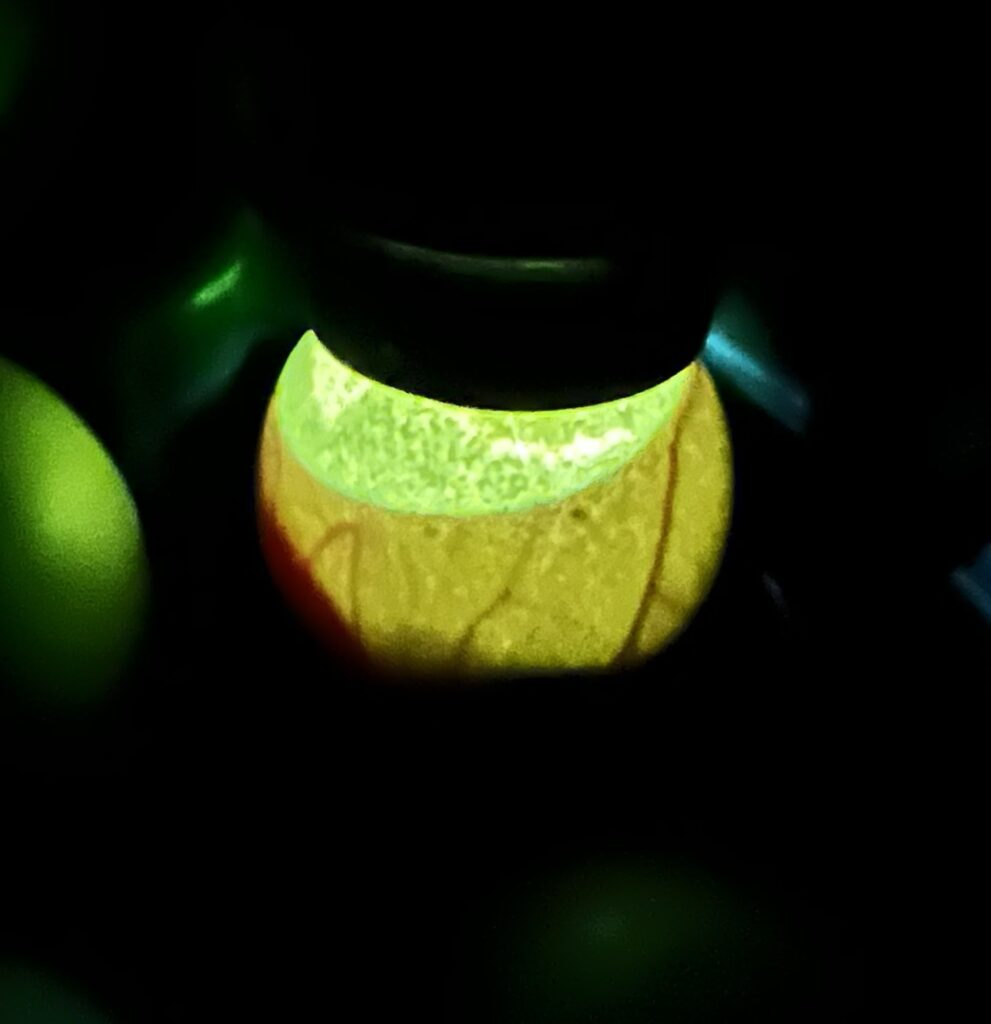
If you’ve been waiting to hear about how the first Lavender Ameraucana hatch of the season is going, thank you for your patience. Where does the time go?? Read on to find out how this set, now two-thirds of the way to hatch, is doing!
At the first candling, a week after the eggs were set, I was pleased to discover that there were very few “clears” (eggs that didn’t develop, presumed to be non-fertile), and that even the four badly-cracked eggs (thanks to the flexing of the incubator tray) were developing. One of the cracked eggs didn’t seem to be quite as far along as the other eggs, suggesting it may have quit, but I left it in to recandle a week later. For good measure, I also reapplied Liquid Bandage to the cracked eggs to ensure that I covered every inch of the damage…which was extensive. Imagine accidentally crushing an egg in your hands without piercing the inner membrane – this was what the shells looked like when the true extent of the damage was revealed by candling them in a dark room.

After another week in the incubator, it was time to do the second candling. Since chicken eggs generally take three weeks to develop and hatch, we’re in the homestretch now. There were no strange odors emanating from the incubator (a sign that an egg may have a bacterial infection and – worst case scenario – possibly be working toward exploding in the incubator), which was good. Candling showed that the eggs still appeared to be developing, though a couple were so dark-shelled – blue-shelled eggs can be very difficult to see into – that I had to assume they were still developing. Others were much more cooperative, revealing healthy networks of blood vessels and even some “fluttering” movement from the chicks themselves.
Of the four cracked eggs, three are clearly developing, but the fourth is questionable and probably a “blood ring”, meaning that it began developing but quit. Note: sometimes what looks like a blood ring may actually not be one at all, so I leave “questionable” eggs in until it’s clear that they’ve stopped growing.

In a few days, I’ll start the hatcher, a separate incubator that I use for the hatching process, and, once the temperature has stabilized, the eggs will be transferred to that hatcher to complete their journey. It’s looking very promising for a whole new crop of little lavender chicks to be running around on the farm soon. Will the cracked eggs hatch? Stay tuned to find out!


